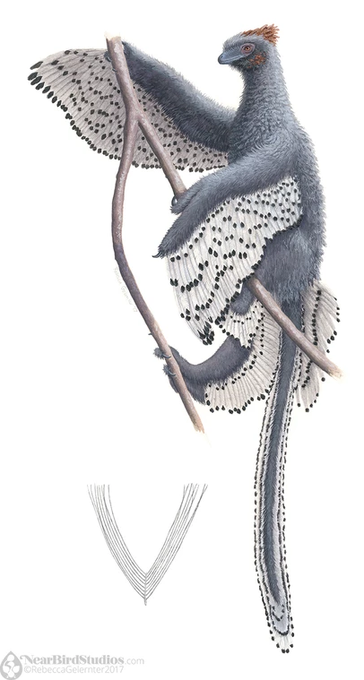troodontidsのTwitterイラスト検索結果。 7 件
Some five-year-old #paleoart for #FossilFriday: troodontids meet Tusoteuthis. Fossil coleoids are famously difficult to reconstruct (all soft-tissue, virtually no skeleton), so it's sometimes best to bundle them up on a beach where no-one can tell what they're meant to look like.
Rebecca Gelernter has represented amazing hypothesys following current knowledge about feathered cretaceous paravians. Among her troodontids, the Anchiornis huxleyi is my favorite depiction of this species. Also excellent feathers in her current birds!
https://t.co/fKNawHuL3C
Irene C. Ribot has really stunning illustrations, amazing details with 0.03 ink markers, nice games of ligth and textures, a variated record... (and of course, troodontids🤘🏼)
Wish someday I can watch her exhibited works at Girona when pandemy allows it.
https://t.co/K8g49zsE14
@king_tyranno Royal gryphon. My take on gryphons borrows a lot from dromaeosaurs and troodontids.
With the Mesozoic narrowly in the lead, here are a couple Late Cretaceous troodontids that I drew in colored pencil around Fall 2017: Gobivenator & Saurornithoides. #paleoart #throwbackthursday #paleontology #sciart #scientificillustration
This furtive little creature is Nodontoraptor australis, a descendant of derived #Troodontids. Dwelling in the subtropical open forests of Late Eocene Texas, Nodontoraptor was named for one surprising anatomical feature: a completely toothless beak! #dinosaurs #speczoo



















